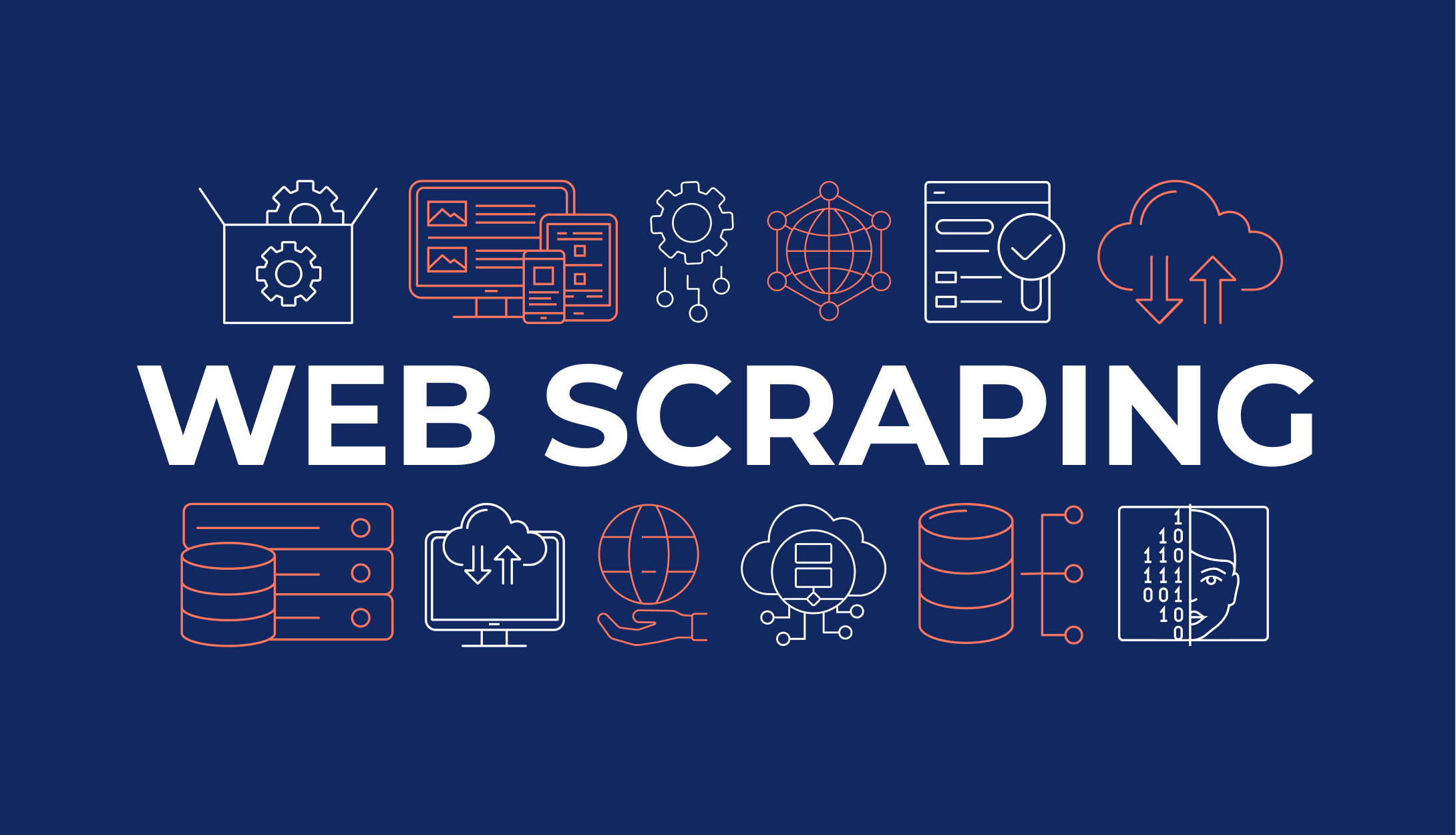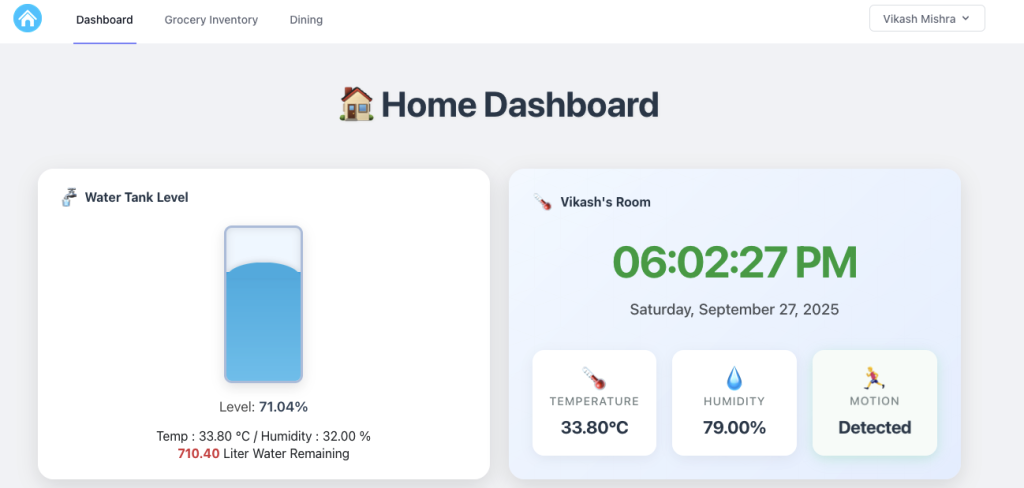Unleashing the Web’s Potential: Your Ultimate Guide to Collecting Data for Personal Projects with Selenium
In today’s data-driven world, the ability to collect information from various online sources can unlock incredible possibilities for personal projects. Whether you’re a hobbyist developer, a budding data scientist, or simply someone with a burning idea, accessing structured web data can be the key to bringing your vision to life. While many websites offer powerful APIs for programmatic access, a vast ocean of information remains locked behind traditional web interfaces. That’s where web scraping and web automation tools like Selenium come in.
Selenium automation isn’t just for testing; it’s a dynamic framework that allows you to control web browsers, mimicking human interactions. Imagine being able to automatically navigate websites, click buttons, fill out forms, and extract precisely the data you need, all with code. This blog post will guide you through the essentials of using Selenium for data collection, covering popular programming languages and providing valuable insights to ensure your projects are both effective and ethical.
Navigating the Ethical Landscape of Web Scraping
Before we dive into the technicalities, it’s paramount to understand the ethical and legal boundaries of data extraction. Responsible web scraping is crucial to avoid potential issues and maintain the integrity of the web.
Key Ethical Guidelines for Web Scrapers:
- Respect
robots.txt: Always check a website’srobots.txtfile (e.g.,www.example.com/robots.txt). This file provides guidelines for web crawlers, indicating which parts of the site can and cannot be accessed. Adhering to these rules is a fundamental ethical practice. - Review Terms of Service (ToS): Many websites explicitly state their policies on automated data collection in their Terms of Service. Always read these to ensure your activities are permissible. Some ToS strictly prohibit scraping.
- Avoid Overloading Servers: Send requests at a reasonable, human-like pace. Implement delays (e.g.,
time.sleep()in Python) between requests to prevent overwhelming the website’s server, which can lead to service disruption for other users. - Prioritize APIs: If a website offers a public API, use it! APIs are designed for efficient and permissioned data access, making them the most reliable and ethical method.
- Be Transparent (User-Agent): Identify your scraper with a descriptive User-Agent string. This allows website administrators to contact you if necessary.
- Do Not Scrape Private or Sensitive Data: Avoid collecting personally identifiable information (PII) or confidential data without explicit consent. Adhere to data privacy regulations like GDPR or CCPA.
- Avoid Copyright Infringement: While factual data itself is generally not copyrightable, the way it’s presented (e.g., specific text, images, database structures) often is. Be mindful of copyright laws when collecting and using content. If you’re using collected data for publication, ensure you have the right to do so and always attribute sources.
- Don’t Bypass Security Measures: Attempting to bypass CAPTCHAs, IP blocks, or other security features can be considered malicious and may have legal repercussions.
By following these principles, you can ensure your web data collection efforts are both productive and respectful.
Getting Started with Selenium Automation
Selenium WebDriver acts as a bridge between your code and a real web browser. To begin your journey into browser automation, you’ll need:
- Selenium WebDriver Library: This is the core library that provides the commands to control the browser. You’ll install this into your chosen programming language environment.
- Browser Driver: This is a specific executable file (e.g., ChromeDriver for Google Chrome, GeckoDriver for Mozilla Firefox) that allows Selenium to communicate with the browser. You must download the correct driver for your browser version and ensure your system can find it (either by placing it in your system’s PATH or by specifying its location in your code).
Once these prerequisites are in place, you’re ready to write your first automated data collection script!
1. Python with Selenium: The Agile Scraper’s Friend
Python is the go-to language for web scraping projects due to its clear syntax, vast ecosystem of data processing libraries, and a large, supportive community. It’s excellent for rapid development and tackling dynamic web content.
How to Start with Selenium Python:
- Install Python: Download and install Python from
python.org. - Install Selenium Library: Open your terminal or command prompt and run:Bash
pip install selenium - Download Browser Driver: Get the compatible ChromeDriver from the Chromium website or GeckoDriver for Firefox from the Mozilla GitHub releases. Place it in a directory accessible via your system’s PATH, or note its path for explicit use in your script.
Sample Code Snippet (Python):
This example demonstrates opening Google, searching for “Selenium web scraping,” and printing the page title.
Python
from selenium import webdriver
from selenium.webdriver.common.by import By
from selenium.webdriver.common.keys import Keys
import time
# --- Setup: Ensure your chromedriver is in your PATH or specify its path ---
# Option 1 (Recommended): If chromedriver is in your system's PATH
driver = webdriver.Chrome()
# Option 2: Specify the path to your chromedriver executable
# from selenium.webdriver.chrome.service import Service
# service = Service('C:/path/to/your/chromedriver.exe') # Adjust path for your OS
# driver = webdriver.Chrome(service=service)
try:
# Navigate to a website
driver.get("https://www.google.com")
print(f"Page title: {driver.title}")
# Find the search bar element by its 'name' attribute
# You'll often use By.ID, By.CLASS_NAME, By.XPATH, By.CSS_SELECTOR for elements
search_box = driver.find_element(By.NAME, "q")
# Type a query and press Enter
search_box.send_keys("Selenium web scraping" + Keys.RETURN)
# Wait for the search results page to load (a simple, but often effective, delay)
time.sleep(3)
print(f"New page title after search: {driver.title}")
# Example of extracting data: Find all search result links (conceptual)
# search_results = driver.find_elements(By.CSS_SELECTOR, "h3 a") # Adjust CSS selector as needed
# for result in search_results:
# print(result.text + ": " + result.get_attribute("href"))
finally:
# Always close the browser to release resources
driver.quit()
Pros of Python with Selenium:
- Ease of Use: Highly readable syntax makes it accessible for beginners in web automation.
- Rich Libraries: Seamless integration with powerful data analysis libraries like Pandas and NumPy for post-scraping data processing.
- Vibrant Community: Extensive documentation, tutorials, and community support for troubleshooting.
- Versatility: Beyond scraping, Python can be used for backend development, machine learning, and more.
Cons of Python with Selenium:
- Performance: Can be slower than compiled languages for very large-scale, high-frequency data collection.
- Global Interpreter Lock (GIL): Limits true multi-threading for CPU-bound tasks, though asynchronous programming can enhance concurrency for I/O-bound scraping.
2. Java with Selenium: The Enterprise-Grade Solution
Java, a robust and platform-independent language, is a common choice for building large, scalable, and maintainable automation frameworks, particularly in enterprise environments.
How to Start with Selenium Java:
- Install Java Development Kit (JDK): Download and install a recent JDK version (e.g., OpenJDK).
- Install Build Tool (Maven/Gradle): These tools simplify dependency management.
- Set up an IDE: Use popular Integrated Development Environments like IntelliJ IDEA or Eclipse.
- Add Selenium Dependencies: In your
pom.xml(for Maven) orbuild.gradle(for Gradle), include the Selenium Java dependency. - Download Browser Driver: Obtain the compatible ChromeDriver or GeckoDriver, as described for Python.
Sample Code Snippet (Java with Maven):
First, add this to your pom.xml within the <dependencies> section:
XML
<dependency>
<groupId>org.seleniumhq.selenium</groupId>
<artifactId>selenium-java</artifactId>
<version>4.21.0</version> </dependency>
Then, your Java code:
Java
import org.openqa.selenium.WebDriver;
import org.openqa.selenium.chrome.ChromeDriver;
import org.openqa.selenium.By;
import org.openqa.selenium.Keys;
import org.openqa.selenium.WebElement;
public class SeleniumJavaExample {
public static void main(String[] args) {
// --- Setup: Ensure your chromedriver is in your PATH or specify its path ---
// Option 1 (Recommended): If chromedriver is in your system's PATH
// System.setProperty("webdriver.chrome.driver", "chromedriver"); // Not strictly needed if in PATH
// Option 2: Specify the exact path to your chromedriver executable
System.setProperty("webdriver.chrome.driver", "/path/to/your/chromedriver"); // Adjust for your OS
WebDriver driver = new ChromeDriver();
try {
// Navigate to Google
driver.get("https://www.google.com");
System.out.println("Page title: " + driver.getTitle());
// Find the search bar
WebElement searchBox = driver.findElement(By.name("q"));
searchBox.sendKeys("Selenium web scraping" + Keys.RETURN);
// Wait for results
Thread.sleep(3000); // 3 seconds delay
System.out.println("New page title after search: " + driver.getTitle());
} catch (InterruptedException e) {
e.printStackTrace();
} finally {
// Close the browser
driver.quit();
}
}
}
Pros of Java with Selenium:
- Robustness & Scalability: Ideal for building large, complex, and highly maintainable web scraping solutions.
- Strong Typing: Helps catch errors during compilation, leading to more stable and predictable code.
- Performance: Generally performs faster than interpreted languages for execution-heavy tasks.
- Mature Ecosystem: Comprehensive IDEs and testing frameworks (e.g., JUnit, TestNG) for enterprise-grade development.
Cons of Java with Selenium:
- Verbosity: Java code can be more verbose, requiring more lines of code for similar functionality compared to Python.
- Steeper Learning Curve: Setting up and managing Java projects, especially with build tools, can be more challenging for beginners.
- Less Agile for Quick Scripts: Not as well-suited for quick, disposable data gathering scripts.
3. Other Languages with Selenium: Expanding Your Horizon
Selenium WebDriver offers official bindings for a variety of other popular programming languages, allowing you to leverage your existing skill set or explore new options for automated web data extraction.
C# with Selenium
C# is Microsoft’s versatile language, extensively used with the .NET framework for Windows applications and web development.
- How to start: Install Visual Studio, create a .NET project, and add the
Selenium.WebDriverNuGet package. Download the appropriate browser driver. - Sample Code Snippet (C#):
using OpenQA.Selenium;
using OpenQA.Selenium.Chrome;
using System;
using System.Threading;
class SeleniumCSharpExample
{
static void Main(string[] args)
{
// --- Setup: Chromedriver must be in PATH or path specified ---
IWebDriver driver = new ChromeDriver(); // Assumes chromedriver is in PATH
try
{
driver.Navigate().GoToUrl("https://www.google.com");
Console.WriteLine($"Page title: {driver.Title}");
IWebElement searchBox = driver.FindElement(By.Name("q"));
searchBox.SendKeys("Selenium web scraping" + Keys.Return);
Thread.Sleep(3000); // 3 seconds delay
Console.WriteLine($"New page title: {driver.Title}");
}
finally
{
driver.Quit();
}
}
}- Pros: Deep integration with the .NET ecosystem, powerful IDE (Visual Studio), strong for developing desktop and web applications.
- Cons: While .NET Core is cross-platform, its historical focus has been Windows. Less community emphasis on general web data collection compared to Python.
JavaScript (Node.js) with Selenium
JavaScript, powered by Node.js, is an excellent choice for full-stack developers looking to extend their skills to web automation. It’s particularly strong for handling asynchronous operations common in web interactions.
- How to start: Install Node.js, initialize a new project (
npm init), and installselenium-webdriver(npm install selenium-webdriver). Download the appropriate browser driver. - Sample Code Snippet (JavaScript):
const { Builder, By, Key, until } = require('selenium-webdriver');
async function runSeleniumScript() {
// --- Setup: Chromedriver must be in PATH or path specified ---
let driver = await new Builder().forBrowser('chrome').build(); // Assumes chromedriver is in PATH
try {
await driver.get('https://www.google.com');
console.log(`Page title: ${await driver.getTitle()}`);
let searchBox = await driver.findElement(By.name('q'));
await searchBox.sendKeys('Selenium web scraping', Key.RETURN);
await driver.sleep(3000); // 3 seconds delay
console.log(`New page title: ${await driver.getTitle()}`);
} finally {
await driver.quit();
}
}
runSeleniumScript();- Pros: Native to the web, allowing for shared knowledge between front-end and automation tasks. Excellent for asynchronous and event-driven data collection needs.
- Cons: Debugging complex asynchronous flows can sometimes be challenging. The web scraping community for Node.js is growing but still not as extensive as Python’s.
Ruby with Selenium
Ruby is admired for its elegant syntax and the Ruby on Rails framework, making it a strong contender for expressive and concise automation scripts.
- How to start: Install Ruby, then install the
selenium-webdrivergem (gem install selenium-webdriver). Download the appropriate browser driver. - Sample Code Snippet (Ruby):
require 'selenium-webdriver'
# --- Setup: Chromedriver must be in PATH or path specified ---
driver = Selenium::WebDriver.for :chrome # Assumes chromedriver is in PATH
begin
driver.navigate.to 'https://www.google.com'
puts "Page title: #{driver.title}"
search_box = driver.find_element(name: 'q')
search_box.send_keys 'Selenium web scraping', :return
sleep 3 # 3 seconds delay
puts "New page title: #{driver.title}"
ensure
driver.quit
end- Pros: Clean and concise syntax, fostering productive development. Strong support for test automation frameworks (e.g., Capybara, RSpec).
- Cons: A smaller web scraping community compared to Python. Less widely adopted for general-purpose data collection projects.
R with Selenium
R is primarily used for statistical computing and data visualization. While less common for general web automation, it provides tools for direct web data extraction into an R environment for immediate analysis.
- How to start: Install R and RStudio, then install the
seleniumandseleniderpackages (install.packages("selenium"); install.packages("selenider")). Ensure Java 17+ is installed. Download the appropriate browser driver. - Sample Code Snippet (R):
library(selenider)
library(dplyr) # For piping operations
# --- Setup: Chromedriver must be in PATH and Java 17+ installed ---
session <- selenider_session("selenium", browser = "chrome")
tryCatch({
# Navigate to Google
open_url(session, "https://www.google.com")
cat("Page title:", elem_text(session %>% find_element("title")), "\n")
# Find the search bar and type a query
search_box <- session %>% find_element(css = "textarea[name='q']") # Google search box is often a textarea
elem_send_keys(search_box, "Selenium web scraping", key = "return")
# Wait for search results
Sys.sleep(3) # 3 seconds delay
cat("New page title:", elem_text(session %>% find_element("title")), "\n")
}, finally = {
close_session(session)
})- Pros: Seamless integration with R’s powerful data analysis, statistical modeling, and visualization capabilities. Ideal for researchers and data scientists already proficient in R.
- Cons: Not designed for broad general-purpose scripting. The web automation community in R is smaller compared to Python or Java.
Inspiring Personal Projects with Web Automation
With the power of Selenium automation at your fingertips, you can transform countless ideas into reality. Here are some popular web scraping project ideas that can be developed using these techniques:
- E-commerce Price Tracker: Automatically monitor product prices across multiple online stores. Get alerts when prices drop or stock changes.
- Real-time News Aggregator: Build a custom news feed by collecting headlines and articles from various news outlets based on your specific interests or keywords.
- Job Board Scraper: Automate the search for relevant job postings from different job sites, filter them by criteria, and store them in a manageable format.
- Sports Statistics Collector: Gather game results, player statistics, and team standings from sports websites for personal analysis or fantasy league insights.
- Real Estate Market Analysis Tool: Collect property listings, pricing data, and neighborhood information to analyze trends or find ideal rental/purchase opportunities.
- Event Calendar Builder: Scrape event details (date, time, location, description) from local venue websites, community pages, or ticketing sites.
- Social Media Activity Monitor (Public Data): (Always respecting platform ToS) Track public engagement metrics for specific public profiles or trends.
- Academic Research Assistant: Automate the collection of publicly available research paper metadata or abstracts from academic databases.
- Online Course Availability Notifier: Get automatic notifications when a specific online course opens for enrollment or a new batch begins.
- Review Sentiment Analyzer: Scrape product reviews from e-commerce sites or movie reviews from entertainment platforms to perform sentiment analysis.
Remember, the key to successful web data collection is to start small, understand the target website’s structure, and diligently adhere to ethical guidelines. By mastering Selenium, you’re not just automating tasks; you’re unlocking a world of data for your personal innovation. Get started today and see what incredible projects you can build!







Leave a Reply